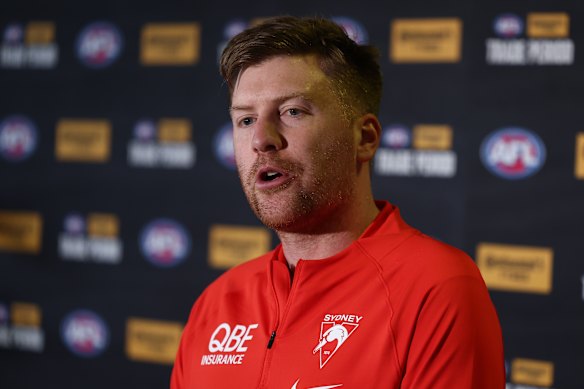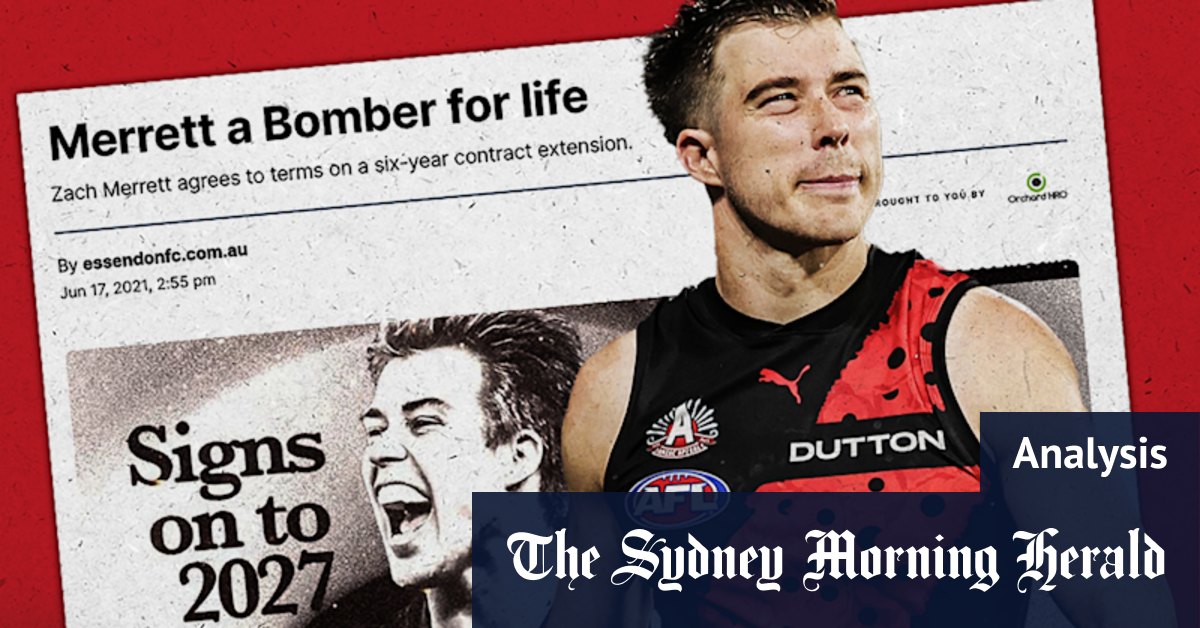What has changed the landscape significantly in the past decade – and made the pursuit and trading of contracted players more common – is the explosion of long-term contracts of seven, eight or nine years for unrealised talents or players in their mid-to-late 20s.
Loading
Clubs don’t like those deals much but argue that the desperation for A-grade talent has created a market where either money or tenure (and in modern times, both) have increased to entice a player.
Managers push for them and the players’ association is comfortable with the trend, its newly appointed CEO James Gallagher – who spent four years at North Melbourne – telling SEN on Wednesday they were happy with the status quo.
“Long-term deals work well both ways,” Gallagher said.
“You don’t have concerns from Collingwood about Nick Daicos, who is on a long one, or North having Harry Sheezel.
“There are benefits to them.
“Occasionally, they don’t work out, but that’s not enough to bring in restrictions. Clubs need to have the ability to set up their lists in the right way. For some clubs, that’s long-term deals, and others haven’t gone there. Any restrictions we would be loath to dive into.”
They argue that for every Charlie Curnow and Christian Petracca, there is Merrett and Marshall (and let’s not forget Josh Dunkley and Joe Daniher in recent years, or former Swan Ryan O’Keefe way back in 2008), who are denied exits.

Sydney list manager Chris Keane got his man, superstar forward Charlie Curnow.Credit: AFL Photos
The players also recognise the cases of Will Hayward and Ollie Florent, who were encouraged out the door, despite having four seasons left on long-term deals, so the Swans could land Curnow. Melbourne cleared the decks by asking Clayton Oliver to leave with five years left on a long-term deal, something the Magpies did in 2022 when they traded out Brodie Grundy.
A club CEO, who wished to remain anonymous, said the reality is a club’s approach depends on the player concerned, with each player’s situation still likely to be assessed on a case-by-case basis. It means the easy narrative that players don’t rate contracts underplays a club’s ability to be brutal if they want a contracted player out the door.
But the AFL is concerned about the growth of long-term deals.

Down to the wire: (clockwise from top left) Carlton’s Charlie Curnow, the Western Bulldogs’ Jamarra Ugle-Hagan, Melbourne’s Christian Petracca and Essendon captain Zach Merrett all featured in a frantic trade period.Credit: Photos: Getty Images, AFL Photos. Artwork: Nathan Perri, Stephen Kiprillis
The league is considering pushing hard for a change, with CEO Andrew Dillon on the record as saying a push for maximum-term contracts is something being assessed.
The reason behind the AFL’s concern is that there are now 14 players on long-term contracts that stretch out past 2031, when the broadcast deal behind the river of money flowing through the system ends. With DAZN the new owners of Foxtel, and an increasingly fragmented broadcast market making it difficult to predict whether the money will continue to pour into the AFL, the league is concerned clubs, particularly those less financially secure, are making promises to players they may find hard to keep if the broadcast revenue went south.
Knowing the number of players on long-term deals will blow out well beyond 14, there is work being done at AFL House, in consultation with clubs, about what should or could be introduced to safeguard the competition and clubs.
Some hope the trade period will be another step towards making players think twice before signing a long-term deal to retain flexibility.
However, one prominent player manager, who preferred to remain anonymous to speak freely, said that was unlikely as few players would be able to resist what the market offered.
But the willingness of players to push for a trade with years on their contract remaining – and the potential damage that may do to their reputation – may change. Not only will clubs have the power once a player is signed, they appear more willing to assert that power.
Loading
It’s likely Port Adelaide’s Zak Butters considered this year whether pushing for a trade now, a year out from when he becomes a free agent next season, was worth the drama. He decided to bide his time, ensuring his exit happens, if it does, at the appropriate time – when he is a free agent entitled to follow the path Lance Franklin, Patrick Dangerfield and many others have gone down before him.
This trade period won’t be the real mechanism for change. That will happen when the AFL sits down with the players’ association to discuss potential changes to trading and contracting rules in the interests of equalisation.
What this year’s trade period did show is that battle lines are being drawn between clubs and players.
A fight seems inevitable.
Keep up to date with the best AFL coverage in the country. Sign up for the Real Footy newsletter.

